
Dogs
The Great Pyrenees has the appearance of a large white bear. With his double hair coat and natural protective instincts, this breed is an excellent guardian for sheep as well as a good companion.
The Great Pyrenees is considered one of the oldest natural breeds and some believe it has been around since 3000 BC. The breed was developed in the rugged mountains of the Pyrenees and is thought to be a descendant of the mastiff type dogs that are still found today in the Baltic areas and North Sea coasts. It is also a descendant of the Hungarian kuvasz and is related to the St. Bernard and Newfoundland. The Great Pyrenees, also known as the Pyrenean Mountain dog, was originally used to protect the sheep flocks against bears and wolves. The dogs were also used to pull sleds. When up in the Pyrenees mountains, the dogs look like moving snowdrifts.
In 1824, the first pair of Great Pyrenees arrived in the United States. By 1933, the Great Pyrenees was recognized by the American Kennel Club as a member of the working group.
The Great Pyrenees is a large dog with a regal expression. He has a broad chest and broad back with an overall well-muscled body. The head is wedged shaped with drooping ears. The tail is long and well plumed. The most striking characteristic of the Great Pyrenees is his coat. He was originally intended as an outdoor dog so his coat is thick, double and weather resistant. The long flat thick outer coat lies over coarse straight hair. The coat is more abundant around the neck and shoulders, giving the dog the impression of a mane or ruff, which tends to be more pronounced in males. The front and rear legs are feathered. The more the dog looks like a brown bear, except for coloring and drooping ears, the more close to perfect he is. The Great Pyrenees is all white but may have patches of gray, yellow or tan. The breed standard requires that the Great Pyrenees have two dewclaws on both hind legs. The adult Great Pyrenees stands 27 to 32 inches at the shoulder and weighs 95 to 120 pounds.
By instinct, the Great Pyrenees tends to be a good guard dog. He has an innate desire to protect his family and home. Originally, the breed was intended to be left alone protecting sheep flocks up in the mountain valleys of Europe. This has created a dog that has a natural tendency to protect his flock. This can unfortunately lead to problems if the dog is housed in an urban setting without appropriate training. The Great Pyrenees is an intelligent and independent dog and can sometimes be a little difficult to train, especially for obedience. He tends to be quiet and introspective and must be taught early in life that humans are the pack leaders.
The Great Pyrenees is happiest as a one family dog. He does not do well when placed in various different homes or families. They are wary of strangers and tend to make friends slowly. But when they do make a friend, it is for life. If not raised with other dogs, the Great Pyrenees may challenge other dogs that attempt to enter his domain. Since this dog is large, he requires a strong and experienced owner. This breed does not require a lot of exercise but does best in a home with a large fenced yard.
This breed has a long hair coat that must be brushed at least weekly to prevent matting. They do tend to shed a significant amount.
The Great Pyrenees is a natural protector but does need training in obedience. To prevent aggression, this breed should be socialized at an early age.
The Great Pyrenees can be intimidating and does not readily welcome strangers into his yard. Some have a tendency to bark excessively if not corrected early in life. If kept primarily outdoors, some Great Pyrenees tend to dig. As with other similar breeds, the Great Pyrenees can drool a lot.
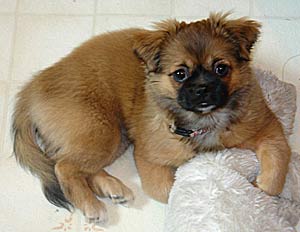 Tibetan Spaniel
Tibetan Spanie
Tibetan Spaniel
Tibetan Spanie
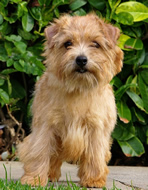 Norfolk Terriers: A guide to dogs and puppies of the Norfolk Terrier breed
The Norfolk Terrier!
The Norfolk Terrier is a charming bree
Norfolk Terriers: A guide to dogs and puppies of the Norfolk Terrier breed
The Norfolk Terrier!
The Norfolk Terrier is a charming bree
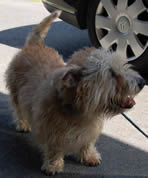 Glen of Imaal Terriers: A guide to dogs and puppies of the Glen of Imaal Terrier breed
The Glen of Imaal Terrier!
The Glen of Imaal Terrier or the
Glen of Imaal Terriers: A guide to dogs and puppies of the Glen of Imaal Terrier breed
The Glen of Imaal Terrier!
The Glen of Imaal Terrier or the
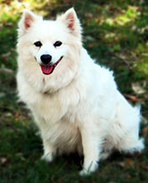 American Eskimos: A guide to dogs and puppies of the American Eskimo breed
The American Eskimo!
A member of the Spitz family, the Amer
American Eskimos: A guide to dogs and puppies of the American Eskimo breed
The American Eskimo!
A member of the Spitz family, the Amer
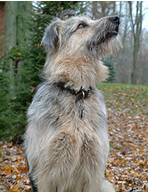 Scottish Deerhounds: A guide to dogs and puppies of the Scottish Deerhound breed
The Scottish Deerhound!
The Scottish Deerhound is comparabl
Scottish Deerhounds: A guide to dogs and puppies of the Scottish Deerhound breed
The Scottish Deerhound!
The Scottish Deerhound is comparabl
Copyright © 2005-2016 Pet Information All Rights Reserved
Contact us: www162date@outlook.com